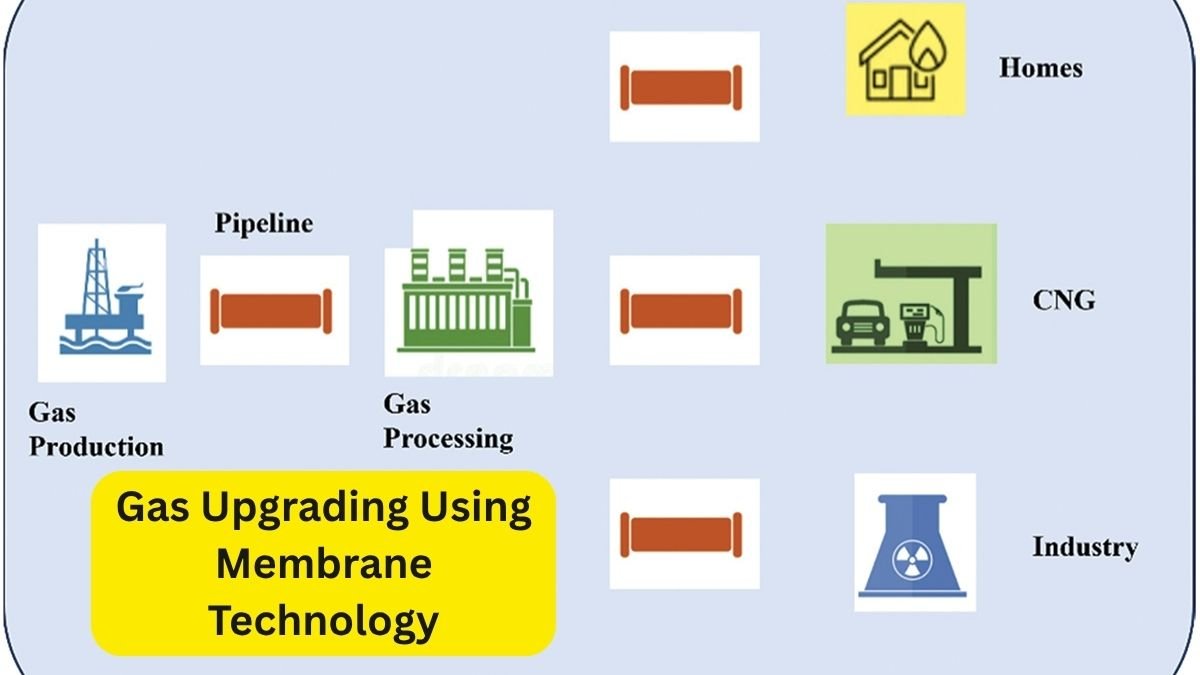Natural gas is a crucial energy source around the world, and its usage continues to grow. Each year, the world consumes over 3.1 trillion cubic meters of natural gas, which is about 110 trillion standard cubic feet. To put that into perspective, that’s enough gas to fill over 1.2 billion Olympic-sized swimming pools! This makes natural gas processing the largest industrial application for gas separation technologies.
But natural gas doesn’t come out of the ground ready to use. It needs to go through a lot of processing before it can be transported through pipelines or used in homes and industries. This raw form of natural gas can vary a lot depending on where it comes from. It mainly contains methane (which can be anywhere from 30% to 90%), but also includes other light hydrocarbons like ethane and propane. Heavier hydrocarbons, water, carbon dioxide (CO2), hydrogen sulfide (H2S), nitrogen, and helium are also present in varying amounts.
Why does it need to be processed?
Simply put, these extra substances must be removed or reduced to meet strict standards for things like energy content and safety. Natural gas must meet certain pipeline specifications, which means only the right mix of components is allowed. If these standards aren’t met, the gas can’t be safely or efficiently delivered.
To meet these needs, the global industry invests billions of dollars every year into equipment for natural gas processing. Back in 2008, this market was worth around $5 billion annually and it has only grown since. One of the newer technologies in this space is membrane gas separation. While this method was responsible for only about 5% of CO2 removal back in 2008, its use is growing.
So, what exactly is membrane gas separation?
It’s a method that uses special filters (called membranes) to separate certain gases from the mix. Think of these membranes like extremely selective coffee filters. They allow some gases to pass through while blocking others. In natural gas processing, they are mainly used to remove CO2 and H2S, also known as “acidic gases.”
Several large-scale projects have begun using membrane technology to clean up natural gas. For example, a project worth $120 million was launched in Southeast Asia by the Cynara-Natco group. Another major installation in Spain now uses Separex membranes to process nearly 1 billion standard cubic feet of gas every day. These projects highlight the increasing trust in and efficiency of membrane-based systems.
Membrane use in natural gas isn’t a brand-new idea. It was first introduced in the 1980s, mainly for removing CO2. Since then, it’s become the main way membranes are used in this industry. But their role has expanded. Today, membranes are also used for removing heavier hydrocarbons like butane, drying the gas (removing water), and even separating out nitrogen and helium.
When it comes to making membranes, polymeric materials are the most popular. These are materials made from long chains of molecules. They’re relatively cheap and easy to make. In contrast, inorganic membranes, like those made from ceramics or metals, can offer better performance but are much more expensive and harder to produce at scale.
That said, even among polymer membranes, only a few have been widely commercialized. Out of hundreds developed in labs, just nine types made up 90% of the gas separation membrane market in 2002. This shows that while there is lots of research happening, only a few materials make it all the way to real-world use.
These polymer membranes don’t have holes in them like sieves. Instead, they use something called the “solution-diffusion mechanism.” This means gases dissolve into the membrane and then slowly move (diffuse) through it. The ability of a membrane to separate gases depends not only on the size of the molecules but also on how well the gas interacts chemically with the membrane material.
Membranes come in two main types: rubbery and glassy. Rubbery membranes are better at separating gases based on how easily they dissolve. Glassy membranes, on the other hand, are better at separating based on how fast gases move through them.
Now, let’s break down where these membranes are used in natural gas processing:
1. Removing Acidic Gases (CO2 and H2S):
This is the biggest use of membranes today. In the U.S. alone, around 20% of natural gas fields need to remove acidic gases before the gas can be used. As gas from low-quality sources becomes more common, this need will increase. Some facilities can already handle up to 680 million standard cubic feet per day, and even bigger projects are in development.
2. Removing Heavy Hydrocarbons (like propane and butane):
Natural gas often contains these heavier hydrocarbons. If they aren’t removed, they can condense into liquids and damage pipelines. They are usually removed using cooling systems or absorption methods. But membranes are beginning to offer a cleaner, more efficient alternative.
3. Water Removal (Dehydration):
Water must be removed to prevent ice blockages and corrosion. Most facilities use chemical absorption methods like glycol units. However, some membranes, especially those made from glassy polymers, are very selective for water and are being tested as alternatives.
4. Nitrogen Removal:
Gas with too much nitrogen can’t be sold through pipelines. Separating nitrogen has usually been done using cryogenic (super cold) methods, but these are expensive. Membranes could provide a cheaper way to do this.
5. Helium Recovery:
Natural gas is a major source of helium. In the U.S. and places like northern Australia, large-scale projects are using cryogenic methods to extract helium. Membrane technology is being considered here too, especially since it might lower costs.
In Summary:
Membrane technology is already proving itself in key areas of natural gas processing, especially for removing CO2 and recovering valuable components. As research continues and materials improve, membranes are likely to play a much bigger role. The combination of efficiency, lower cost, and flexibility makes membranes an exciting part of the future of natural gas processing.
